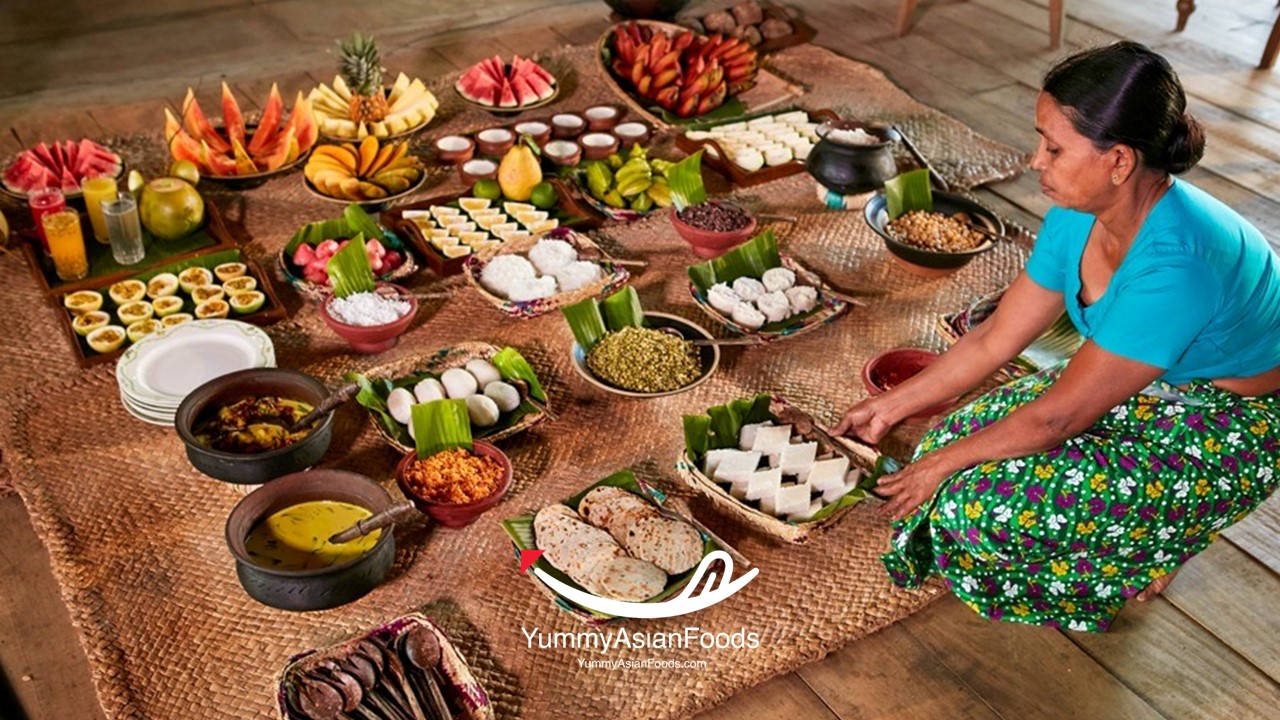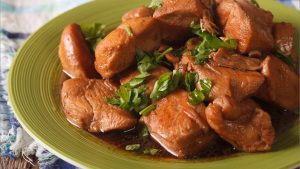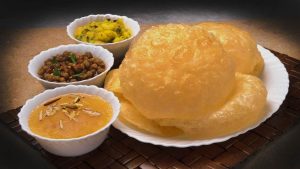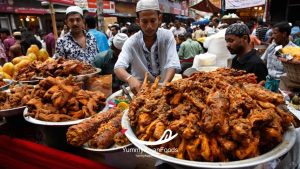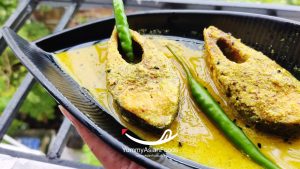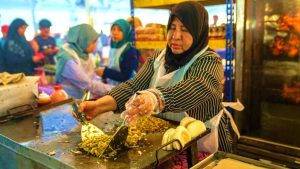Table of Contents
ToggleEmbark on a tantalizing culinary journey through the vibrant and diverse flavors of Sri Lankan cuisine, where each dish tells a story steeped in tradition and rich cultural heritage. From aromatic spices to exotic ingredients, Sri Lankan food is a symphony of tastes that are sure to ignite your taste buds and leave you craving for more. As you explore the island’s culinary landscape, get ready to indulge in an array of mouth-watering dishes that showcase the perfect balance of sweet, savory, spicy, and tangy flavors unique to this tropical paradise. Whether you’re a fan of fiery curries or creamy coconut-infused delicacies, Sri Lankan cuisine offers something for every palate, promising an unforgettable gastronomic experience that will transport you to the bustling streets and bustling markets of this enchanting island nation.
Overview of Sri Lankan Food Cuisine
Sri Lankan food cuisine is a delightful fusion of flavors, reflecting the island’s rich history and vibrant culture. Influenced by diverse culinary traditions from South India, Southeast Asia, and colonial European powers, Sri Lankan dishes offer a tantalizing palette of spices and textures. From creamy coconut milk curries to fiery sambols and tangy pickles, each bite tells a story of the country’s culinary heritage.
Rice forms the staple base of most Sri Lankan meals, accompanied by an array of mouthwatering side dishes that range from savory to sweet. The creative use of aromatic spices like cinnamon, cardamom, cloves, and curry leaves adds depth and complexity to the dishes. Street food plays a significant role in Sri Lankan cuisine as well, with stalls offering freshly prepared snacks such as hoppers (bowl-shaped pancakes), kottu roti (chopped roti stir-fry), and delectable sweets like milk toffees and sweetmeats. Whether you’re a fan of vegetarian delights or savory meat-based dishes, Sri Lankan cuisine has something for everyone’s taste buds.
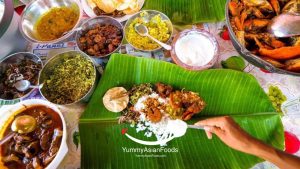
What are the Traditional Sri Lankan Food Cuisines?
Embark on a culinary journey through the vibrant and flavorful world of traditional Sri Lankan cuisine. Known for its rich history and diverse influences, Sri Lankan food is a delightful fusion of herbs, spices, and fresh ingredients that combine to create mouth-watering dishes. From fragrant rice and curry to spicy sambols and sweet treats, each bite tells a story of tradition and heritage.
One cannot explore Sri Lankan cuisine without mentioning the iconic dish of rice and curry – a harmony of flavors featuring an array of curries, from spicy chicken to creamy dhal. The fiery kick of traditional sambols adds a burst of flavor to any meal, while crispy appams and aromatic hoppers offer a unique twist to familiar flavors. Don’t forget to indulge in the sweetness of traditional desserts like wattalappam or kiri pani, each bite infused with nostalgia and culinary expertise that has been passed down through generations.
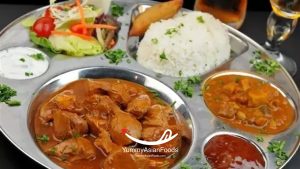
Here are 9 delicious traditional Sri Lankan food cuisines:
1. Rice and Curry Sri Lankan Food
In the vibrant realm of Sri Lankan cuisine, one dish shines brightly as a beloved staple: rice and curry. This iconic meal encapsulates the essence of traditional Sri Lankan food – a harmonious blend of flavors, textures, and colors meticulously curated to tantalize the taste buds. The heart of this dish lies in its simplicity yet remarkable diversity, where each element plays a crucial role in creating a symphony of flavors that dance on the palate with every bite.
Rice serves as the humble foundation, providing comfort and satiety while allowing the rich medley of curries to take center stage. From creamy coconut milk-infused gravies to fiery spice-laden curries bursting with aromatics, each component adds depth and complexity to elevate this seemingly simple dish into a culinary masterpiece. The beauty of rice and curry lies not only in its deliciousness but also in its cultural significance; it embodies generations of tradition and showcases the culinary expertise passed down through time.
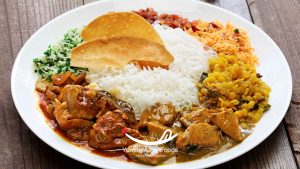
2. Hoppers and String Hoppers Sri Lankan Food
When it comes to Sri Lankan food breakfast favorites, hoppers, and string hoppers definitely steal the spotlight. Hoppers are a type of pancake made from fermented rice flour and coconut milk, creating a delicate yet satisfying taste. These bowl-shaped crepes are usually enjoyed with a spicy sambal or sweet coconut milk for a burst of flavor that is both comforting and exotic.
Moving on to string hoppers, these delicate strands of steamed rice noodles offer a unique texture that pairs perfectly with savory curries. The process of creating string hoppers involves pressing rice flour dough through a sieve to form thin strands, which are then steamed into light, fluffy nests. Diving into a plate of string hoppers topped with fragrant curry is an experience that combines simplicity with complexity in every bite, making it a must-try dish for anyone exploring Sri Lankan cuisine.
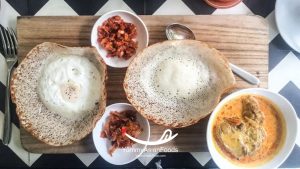
3. Kottu Roti Sri Lankan Food
Kottu Roti, a beloved Sri Lankan street food dish, has a unique appeal that captivates both locals and travelers alike. Made with chopped roti bread mixed with an array of ingredients such as vegetables, eggs, and various spices, this flavorful dish is prepared on a hot griddle, producing a rhythmic chopping sound that adds to its allure. The mix of textures and flavors in Kottu Roti creates a harmonious blend that satisfies the taste buds while providing a true sensory experience.
What makes Kottu Roti stand out is its versatility; it can be customized to suit individual preferences by adding different meats or seafood, making it a truly adaptable dish. Beyond its delicious taste and aromatic appeal, enjoying Kottu Roti also offers a glimpse into the vibrant street food culture of Sri Lanka. Whether enjoyed by bustling roadside vendors or trendy cafes, Kottu Roti remains an integral part of Sri Lankan culinary heritage and a must-try for anyone seeking an authentic gastronomic adventure in this tropical paradise.
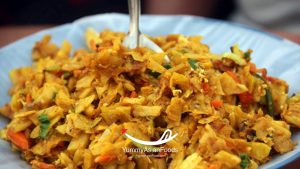
4. Fish Ambul Thiyal Sri Lankan Food
Fish Ambul Thiyal, a popular Sri Lankan dish, is a tangy and sour fish curry that will tantalize your taste buds with its unique flavor profile. Made with chunks of fish marinated in dried goraka, black pepper, turmeric, and other aromatic spices, this dish packs a punch of tanginess that sets it apart from other curries. The slow-cooking process allows the flavors to intensify, creating a rich and flavorful broth that perfectly complements the tender fish pieces.
One of the key elements that make Fish Ambul Thiyal stand out is its preservation qualities. Traditionally prepared as a convenient way to preserve fish for longer periods of time, this dish has evolved into a beloved staple in Sri Lankan cuisine. Its tangy and spicy notes not only add depth to the dish but also serve as a natural preservative for the fish, allowing it to be stored without refrigeration for several days. Whether enjoyed as a main course or paired with steamed rice, Fish Ambul Thiyal is sure to leave you craving more of its zesty goodness on your culinary journey through Sri Lanka’s diverse flavors.
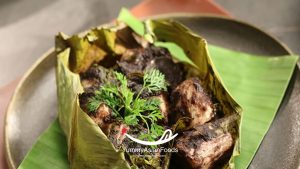
5. Lamprais Sri Lankan Food
Lamprais is a unique and flavorful Sri Lankan dish that showcases the fusion of Dutch and Sri Lankan culinary influences. This iconic rice dish consists of a variety of elements, such as rice cooked in rich coconut milk, accompanied by mixed vegetables, meat (usually chicken or beef), and boiled eggs, all wrapped in a banana leaf and baked to perfection. The Dutch-originated name ‘lamprais’ translates to ‘packet meal’, signifying the traditional method of wrapping the components together.
What sets Lamprais apart is its complex blend of spices, including cinnamon, cardamom, cloves, and pandan leaves, which infuse each bite with layers of aromatic flavors. The slow cooking process allows all these ingredients to meld together harmoniously, resulting in a fragrant and satisfying meal that captures the essence of both Sri Lankan and Dutch cuisines. Whether enjoyed for lunch or dinner, Lamprais provides a wholesome dining experience that will leave your taste buds tingling with delight.
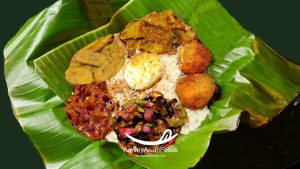
6. Kiribath Sri Lankan Food – Also known as Paal Soru (milk rice)
Among the myriad delectable Sri Lankan dishes, Kiribath holds a special place as a traditional culinary gem. Often symbolizing auspicious beginnings and cultural celebrations, this simple yet rich dish seamlessly blends the humble elegance of rice with the creamy decadence of coconut milk. The ritual of slow-cooking rice in seasoned coconut milk speaks volumes about the island nation’s culinary heritage and its knack for turning everyday ingredients into gastronomic delights.
Moreover, Kiribath’s versatility extends beyond mere sustenance—it serves as a canvas for innovative flavor pairings and exquisite presentations. From savory accompaniments like spicy sambals to sweet toppings such as jaggery or bananas, each variation offers a unique sensory experience that transcends mere consumption. Embracing Kiribath is not just about relishing flavors; it’s a cultural immersion that connects you to centuries-old traditions and community values deeply rooted in Sri Lankan society.
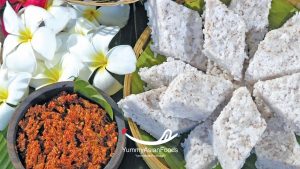
7. Kool Sri Lankan Food
Kool, a delightful seafood broth hailing from the picturesque region of Jaffna in Sri Lanka, is a true culinary masterpiece that encapsulates the essence of coastal flavors. Bursting with an array of fresh seafood such as crab, fish, cuttlefish, prawns, and crayfish, this dish offers a symphony of textures and tastes that are sure to tantalize your taste buds. Moreover, the addition of long beans and other local vegetables adds a unique depth to the broth that makes each spoonful a sensorial adventure.
The beauty of Kool lies not only in its diverse ingredients but also in its preparation method, which infuses every drop with rich aromas and robust flavors. As you delve into a bowl of this savory broth, you can’t help but appreciate how centuries-old culinary traditions have been carefully preserved in this dish. Whether enjoyed on a warm evening by the sea or at a bustling food stall in Colombo, Kool symbolizes the intrinsic connection between Sri Lankan culture and its bountiful oceanic resources. In every sip and every bite lies a story waiting to be discovered—a story of resilience, heritage, and, above all, the love for good food.
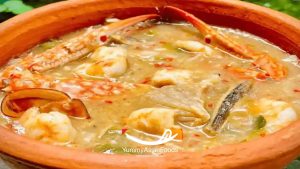
8. Pittu Sri Lankan Food
Now, let’s dive into the unique and delicious world of Pittu, a traditional Sri Lankan dish that is sure to tantalize your taste buds. Pittu consists of cylindrical tubes made of steamed or roasted rice flour mixed with grated coconut, creating a delightful texture and flavor profile. The soft, fluffy rice flour pairs perfectly with the rich and aromatic coconut, offering a harmonious blend of tastes in every bite.
What sets Pittu apart from other dishes is its versatility—it can be enjoyed with a variety of accompaniments such as spicy curries, creamy coconut milk, or even sweet condiments like bananas or honey. This adaptability makes it an ideal choice for any mealtime throughout the day. Whether you savor it for breakfast, lunch, or dinner, Pittu promises to satisfy your cravings and leave you craving for more.

9. Watalappam Sri Lankan Food Dessert
Watalappam is a delightful traditional Sri Lankan food dessert that encapsulates the rich flavors of the island. This creamy, decadent pudding is made with coconut milk, jaggery, cardamom, and cashew nuts, creating a unique blend of sweetness and spice. What sets Watalappam apart is its cultural significance, as it is often served during special occasions and festivals in Sri Lankan households.
The process of making Watalappam involves skillful cooking techniques passed down through generations, infusing each spoonful with tradition and heritage. With its velvety texture and aromatic notes, this dessert offers a sensory experience that transports you to the heart of Sri Lankan food. Whether enjoyed as a sweet ending to a meal or savored on its own, Watalappam is sure to leave a lasting impression on your taste buds as you explore the culinary wonders of this vibrant island nation.
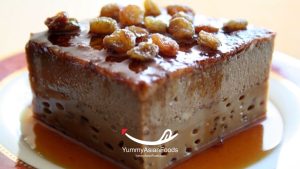
The Similarities and Differences of Indian and Sri Lankan Food Cuisines
When exploring the culinary worlds of India and Sri Lanka, one can immediately notice both the similarities and differences between their cuisines. One striking similarity is the prominent use of spices in both Indian and Sri Lankan dishes, creating a flavor profile that is rich, aromatic, and bold. However, while Indian cuisine often boasts a wide variety of vegetarian options due to cultural influences like Hinduism, Sri Lankan cuisine leans more towards incorporating seafood and meat due to its coastal location.
One notable difference lies in the staple grains used in each cuisine. While rice takes center stage in both Indian and Sri Lankan meals, Indians tend to consume more wheat-based products like roti and naan alongside rice dishes. On the other hand, Sri Lankans rely heavily on red or white rice as their primary carbohydrate source. Despite these differences, both cuisines share a love for coconut milk as a common ingredient used generously in curries and stews to add depth and creaminess to the dishes.
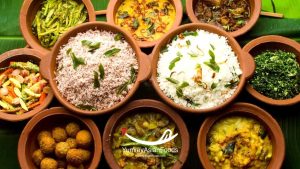
The Similarities and Differences of Pakistani and Sri Lankan Food Cuisines
Pakistani and Sri Lankan cuisines share many similarities due to their geographical proximity and historical connections. Both culinary traditions boast a rich array of spices, herbs, and flavors that create vibrant and aromatic dishes. However, one notable difference lies in the use of coconut milk, a staple in Sri Lankan cuisine but less prominent in Pakistani dishes. This brings a unique creamy and tropical twist to Sri Lankan curries and stews.
Another interesting distinction is the emphasis on bread varieties: while Pakistanis enjoy naan and roti with their meals, Sri Lankans prefer hoppers—bowl-shaped rice flour pancakes often served with spicy sambols or curries. Additionally, both countries have a deep-rooted love for tea; however, while Pakistani chai is strong and spiced, Sri Lankan tea tends to be more delicate, with hints of flavors like cinnamon or cardamom. These subtle differences contribute to the diverse culinary landscapes of these two nations, offering food enthusiasts an exciting journey of exploration through taste.
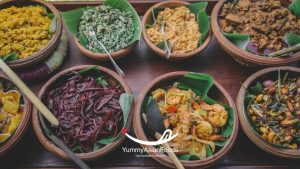
The Similarities and Differences of Bangladeshi and Sri Lankan Food Cuisines
While both Bangladeshi and Sri Lankan food share some commonalities due to their geographical proximity and historical connections, there are also distinct differences that make each cuisine unique. One noticeable similarity is the abundant use of rice as a staple in both Bangladeshi and Sri Lankan dishes. However, the way rice is prepared differs significantly between the two countries, with Bangladeshis favoring fragrant biryanis while Sri Lankans often opt for coconut-infused rice varieties like Kiribati.
When it comes to flavors and spices, both cuisines showcase a complex blend of aromatic herbs and seasonings that contribute to their rich taste profiles. The use of coconut milk in curries is a common trait shared by Bangladeshi and Sri Lankan cooking, providing a creamy texture and subtle sweetness to many dishes. Despite these similarities, the nuanced spice combinations vary between the two cuisines; while Bangladeshi dishes tend to be spicier with a focus on bold flavors like mustard seeds and garam masala, Sri Lankan cuisine leans towards milder yet equally enticing tastes featuring cinnamon, curry leaves, and pandan essence.
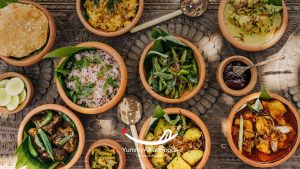
The Origins of Sri Lankan Food
Sri Lankan cuisine is a vibrant blend of diverse influences that have shaped its rich culinary heritage. The roots of traditional Sri Lankan food can be traced back to ancient times, when indigenous ingredients like coconut, rice, and spices were staples in local diets. The country’s historical connections with Indian, Arab, Dutch, and Portuguese traders have also contributed to the evolution of its unique flavors and cooking techniques.
One fascinating aspect of Sri Lankan food is the meticulous preparation methods that have been passed down through generations. The art of grinding spices by hand using a traditional mortar and pestle is still prevalent in many households today. Each dish tells a story, reflecting the cultural tapestry of the island nation through a symphony of flavors and aromas. From fiery curries to sweet desserts, every bite offers a glimpse into the intricate history and deep-rooted traditions that define Sri Lankan cuisine.
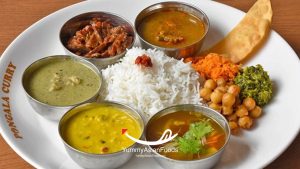
Common Ingredients of Sri Lankan Food
Sri Lankan cuisine is a celebration of diverse flavors and aromatic spices that come together to create unique and mouthwatering dishes. Some common ingredients that are widely used in Sri Lankan food include coconut, rice, chilies, and an array of tropical fruits such as mangoes and pineapples. The use of coconut in different forms—be it milk, oil, or grated coconut—adds a rich flavor and creaminess to many traditional dishes.
In addition to coconut, the liberal use of aromatic spices like cumin, coriander, and cinnamon gives Sri Lankan food its distinct punchy flavors. The fiery heat from red and green chilies adds a spicy kick to many dishes, showcasing the vibrant culinary heritage of the island nation. Whether it’s the tangy sourness of tamarind or the earthy undertones of curry leaves, each ingredient plays a vital role in creating the complex layers of flavor that define Sri Lankan cuisine.
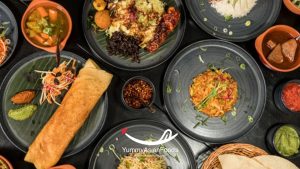
The Global Influence of Sri Lankan Food Cuisines
From its aromatic spices to intricate flavors, Sri Lankan food cuisines have managed to captivate the taste buds of people worldwide. The fusion of indigenous Sinhalese cooking techniques with influences from various colonial powers has led to a unique culinary landscape that stands out on the global stage. Dishes like Kottu Roti, a flavorful stir-fried concoction of roti, meat, and vegetables, and string hoppers—delicate steamed rice noodle patties—have become increasingly popular among food enthusiasts seeking new and exciting culinary experiences.
One aspect that sets Sri Lankan cuisine apart is its emphasis on fresh ingredients sourced locally. The abundant use of coconut in curries and sambols highlights the island’s tropical abundance while adding a distinct richness to the dishes. Moreover, the evolution of Sri Lankan cuisine mirrors the country’s history; each bite tells a story rich in cultural heritage and tradition. As more people around the world discover these hidden gems in Sri Lankan cuisine, it’s clear that this food culture is here to stay and continue making waves in international culinary circles.
Final Words: Explore the Delicious Traditional Sri Lankan Food Cuisines
As we come to the end of our culinary journey through traditional Sri Lankan food cuisines, it is evident that the island’s cuisine is a true reflection of its rich history and diverse influences. The symphony of flavors and spices in dishes like Lamprais and Hoppers showcases the creativity and ingenuity of Sri Lankan chefs who blend different ingredients to create unique taste experiences. Each bite tells a story of centuries-old traditions and cultural exchanges that have shaped Sri Lanka’s food landscape.
Exploring traditional Sri Lankan food is not just about satisfying your taste buds; it’s also a way to appreciate the deep-rooted connection between food, community, and heritage. From fiery curries to soothing coconut milk-based dishes, each cuisine offers a glimpse into the daily lives and celebrations of Sri Lankan people. It allows us to transcend geographical boundaries and immerse ourselves in a world where every ingredient holds symbolic significance and every meal is an invitation to partake in shared memories and traditions passed down through generations. So, next time you sit down to savor a plate of Kottu or Kiribath, remember that you’re not just eating a meal – you’re sharing in a timeless culinary legacy that continues to nourish both body and soul.

